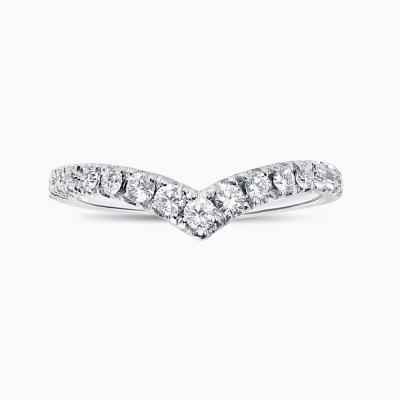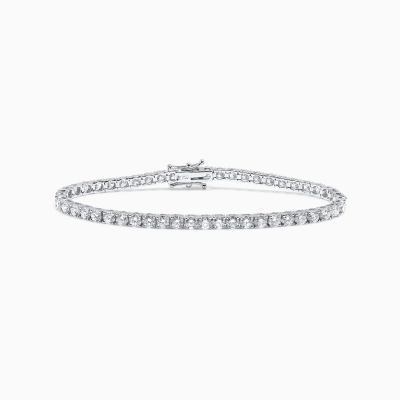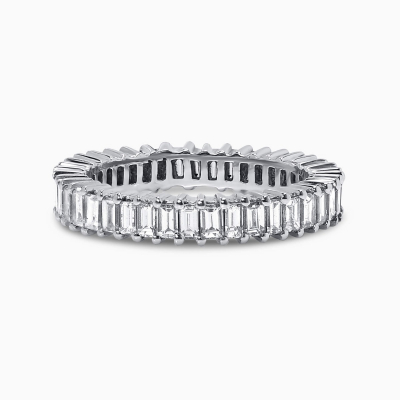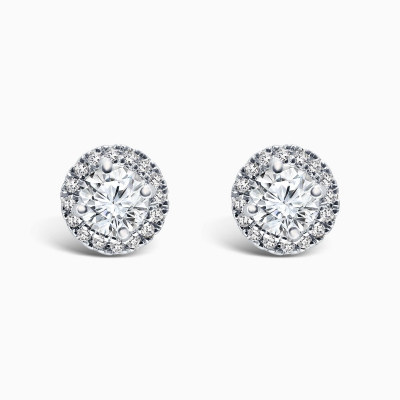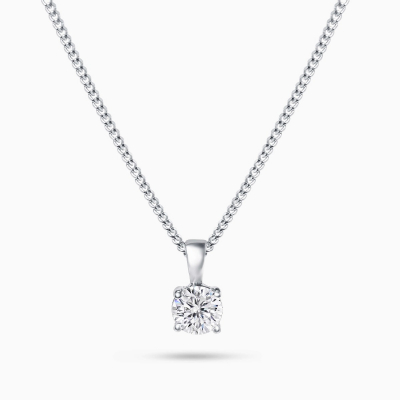USD
/
USD
/
Shipping to:
Currency:
PRONG SOLITAIRE SETTING DIAMOND RING
If you’re planning to ask the love of your life for her hand in marriage, choosing the perfect engagement ring is one of the most important decisions you’ll make. While there are many different styles to choose from, diamond solitaire rings featuring prong settings are the most common and traditional setting. So, if you’re hoping to create a truly romantic moment that you will both treasure forever, this is a great place to start your hunt for the dream ring.
Prong setting rings feature soldered metal claws that are usually designed to feature three, four, or six individual prongs to keep the diamond in place and set to the band of the engagement ring. Prong designs may be rounded, pointed, flat, or V-shaped depending on the shape of the diamond. More prongs keep the diamond more secure while fewer prongs show off more of the diamond. In either case, though, prong setting rings are great for showing off the brilliance of diamond solitaires, not least because they catch more light to guarantee a dazzling glow.
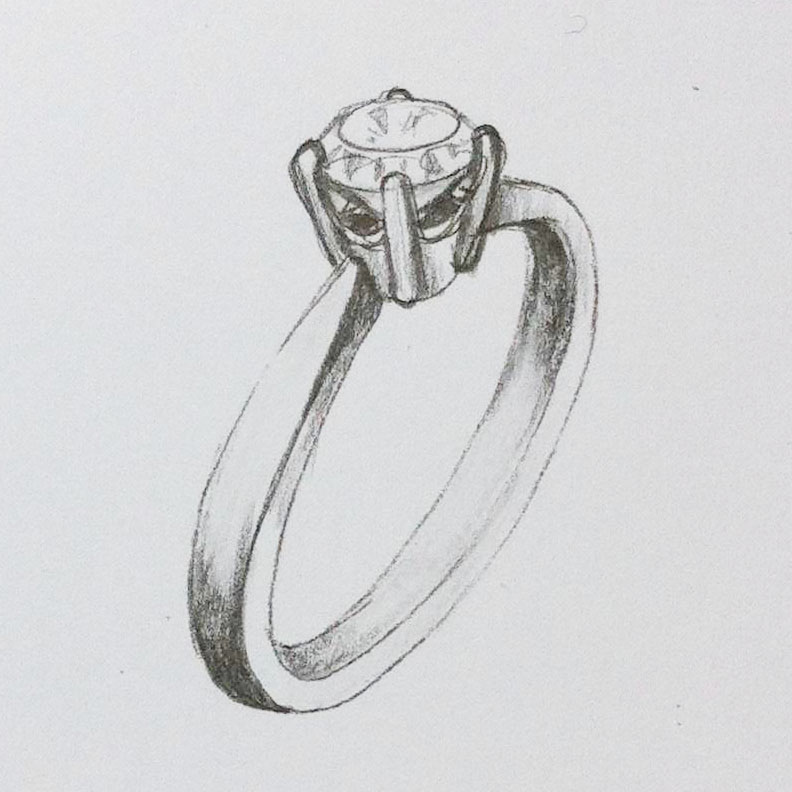
THE HISTORY OF PRONG SETTING RINGS
The tradition of engagements can be traced back thousands of years while the giving of a ring is a tradition that has been used since at least the 15th century as Archduke Maximilian of Austria used one when proposing to Mary of Burgundy in 1477. Diamond solitaires subsequently became a worldwide tradition in the middle of the 19th century, with prong setting rings establishing themselves as the most iconic design as a result of Tiffany & Co’s trademark 1886 six-claw Tiffany Setting.
Prong settings have now been used by jewelers around the globe for over a century. In today’s climate, it is possible to find both traditional and contemporary engagement rings that hold solitaire diamonds to create a truly beautiful design.
THE VERSATILITY OF PRONG DIAMOND SOLITAIRE RINGS
One of the great things about prong setting rings is that they deliver a great level of versatility to show off your diamond solitaire rings in stunning style. A choice of high settings or low settings can help you find the right balance between esthetics and practicality with high settings making the diamond more visible but simultaneously posing a greater risk of snagging and/or scratching.
Prong ring settings are a style that can be used with a variety of materials. Platinum engagement rings often feature this style due to the silver color and lack of impact on the diamond. However, both white gold and yellow gold can be selected too. The softer metals may be more prone to damage that allows the diamond to become loose. So, when choosing these solutions, getting a jeweler to complete a quick annual inspection is advised.
While prong settings can be used to hold multiple diamonds, it is most effective when holding a single gemstone as it shows off the full beauty of the diamond and leaves it sparkling from the moment you pop the question to the moment you tie the knot and beyond.
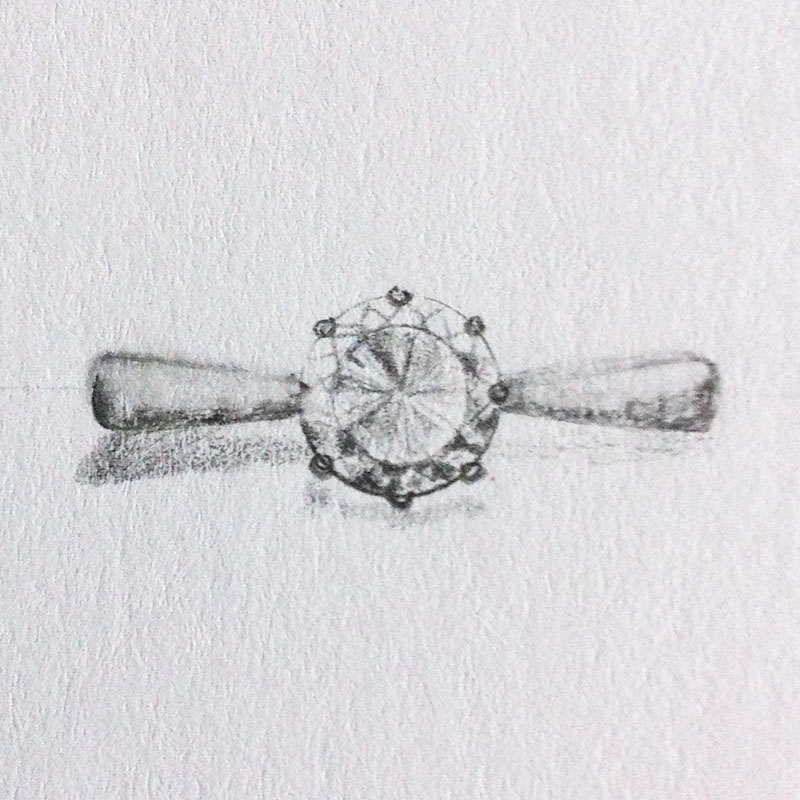
PRONG SETTING RING SHAPES EXPLAINED
As well as the choice of three, four, or six prongs, a diamond solitaire ring that keeps the gemstone set via prongs can be designed to be used with any of the most popular diamond shapes. The right choice will ensure that she receives the ring of her dreams whether she will keep wearing it with the wedding band after you tie the knot or not. The most common diamond solitaire styles can all be found at Reve Diamonds and include:
Emerald cut solitaire
The eye-catching Emerald cut solitaire prong setting is great for Art Deco engagement rings but also suits any ring that seeks a touch of glamor. The large, octagonal, cut is unmistakable and works well with various band materials.
Heart solitaire
A heart-cut solitaire diamond can be the perfect solution for expressing your endless love. They are intricately cut by your jeweler to feature symmetrical curves that will deliver a truly beautiful appearance.
Marquise solitaire
The marquise shape is an instantly recognizable cut that features curved sides and pointed ends. The distinct shape boosts diamond carat and scintillation while it works well with a range of contemporary rings.
Oval solitaire
Oval solitaires combine attributes of marquise and round solitaire cuts to deliver a sophisticated, shimmering cut that can also make the wearer’s fingers look longer. They catch the light with exquisite results.
Princess cut solitaire
Contemporary princess cut solitaire diamonds feature over 50 chevron-shaped facets to deliver a square or rectangular diamond shape with pointed corners. Fire and scintillation are the stand-out attributes.
Round solitaire
The round-cut diamond shape is renowned for offering maximum sparkle and brilliance. Featuring over 56 facets, they reflect light and cast tiny rainbows for a truly magical engagement ring.
SOLITAIRE PRONG SETTING RINGS: THE PROS & CONS
Buying a beautiful engagement ring is a massive moment in your relationship, and there is a lot of pressure to get it right if you want to start the next chapter of your love story on the strongest foot. Solitaire diamond prong rings are an immensely popular choice for many reasons, but it’s imperative that you weigh up the good and the bad. Here are the key factors you need to know.
Prong setting pros
- More of the solitaire diamond will be visible as the prongs are small. This helps the ring make a bigger statement about her status as a bride-to-be.
- Prong settings give the diamond some elevation from the engagement ring band, which allows more light to pass through for improved brilliance and sparkle.
- Solitaire diamond rings with a prong setting are the classic design that most people envision when picturing their dream engagement. So, you won’t go wrong with it.
- Prong settings are a simple, sophisticated, and affordable setting solution that carries a more universal appeal than many intricate designs that are acquired tastes.
- Prong setting rings make it easier to clean the diamond, especially when there are fewer prongs to pose a distraction.
Prong setting cons
- Prong settings can get caught on items, causing scratches to loved ones as well as clothing, furniture, and accessories. Higher settings are the most vulnerable.
- Compared to enclosed settings, prong settings do not offer as much protection to the girdle areas of the diamond.
- The prongs may loosen over time. While this can be fixed with ease, failure to take action may put you at risk of losing the diamond.
THE CLASSIC ENGAGEMENT RING SETTING
Prong settings are the most widely used ring setting of all, delivering a timeless appeal for a variety of solitaire rings, including black diamond engagement rings. The solitaire setting is quite simply defined by the fact that it hosts a single diamond rather than multiple gemstones.
The prongs grip the diamond tightly to hold it in place, creating a base that resembles a basket that directs the attention directly to the diamond. The tight grip is achieved by bending and shaping the prongs against the crown of the stone. While the prong setting design is a simple concept, it requires the careful craftsmanship of a quality jeweler to get it right.
A high prong setting keeps the stone perched high above the ring band while low prong settings bring it much closer to your finger. Prong setting can also be used with diamond solitaires of varying sizes as well as items that are graded differently via the 4 Cs. Whether you have a clear vision of the perfect ring or need a little support finding yours, there will be a diamond solitaire ring that will make your fiance’s hand feel complete.
WHICH PRONG SETTING IS BEST?
Narrowing your search for the perfect ring down to diamond solitaire prong setting rings instantly puts you on the path to finding your dream engagement ring. However, the versatile setting still offers many choices. In addition to different band materials, prong designs, and diamond choices, Reve Diamonds offers bespoke ring designs. After finding the perfect style, you will also want to take several extra steps to gain 100% confidence in the quality of the ring.
As well as having the diamond tested for grading quality, you should run your fingernail across the girdle of the gemstone to check that it stays in place and is secured by the prongs. The diamond solitaire should additionally sit at an even height without any slanting. While hooked prongs are attractive, the open-loop is at extra risk of opening. As such, many buyers avoid this choice.
When looking at potential engagement rings using the prong setting style, it is important to consider the setting of the diamond ring. A diamond that is too big for the ring can look a little strange or be at risk of damage or snagging on clothes. Conversely, oversized prongs can overpower the gemstone to create a less attractive result.
Reve Diamonds boasts a stunning collection of prong-setting solitaire diamond rings and can also test the setting to check that the diamonds are tightly secured. Get in touch or visit our New York showroom to find out more today.







